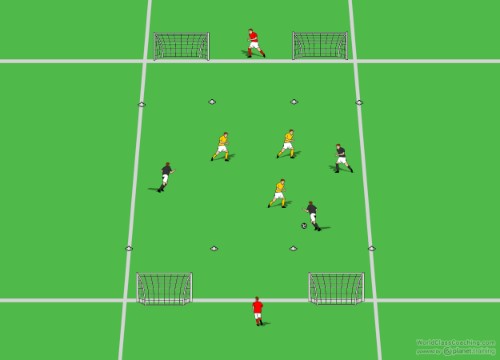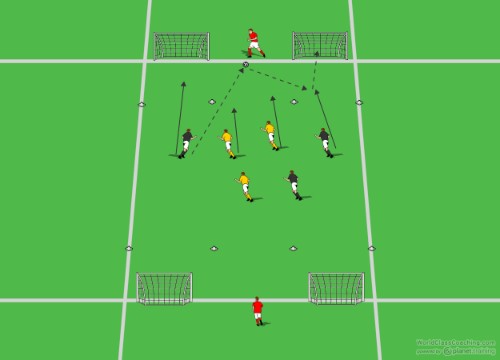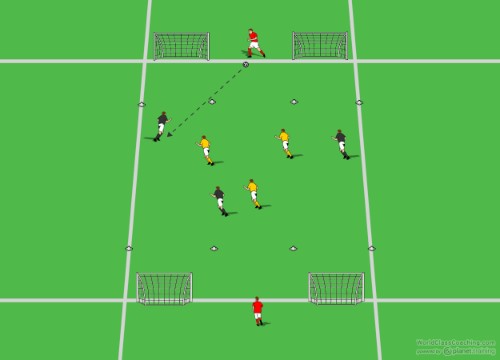By Alex Trukan
The following practice is focused on developing speed of support play and sharp forward runs off the ball. It also develops players’ ability to react quickly and accelerate over short distances. At the same time, players’ anaerobic energy system is improved due to the high intensity of this practice. From technical point of view, the game challenges players’ combination play, passing and through balls. It also requires a great deal of scanning and perception qualities both when on and off the ball.
Set-Up and Directions
Organise a playing area of approximately 20 x 30 yards. Mark out two end zones, 5 yards in from the end line. Place two small sized goals on each end of the area, opposite to each other. Divide the group into two teams of three and further designate two neutral players who should be positioned on the end lines, between the two goals. Prepare a sufficient amount of balls.

Team in possession of the ball tries to create an opportunity to play forwards and get the ball into neutral player. This might be played direct or after combination play with teammates. The practice is multidirectional, team in possession can attack both ways.

As the ball is played into neutral player, attacking players should immediately make supporting runs towards him and offer an option to combine. Neutral players can pass the ball using one touch only, so the support has to be offered quickly. As the ball is played off one touch, it is also a one touch finish into one of the two nearest goals. If the ball goes out, a kick in is applied.

If one team scores, the practice is restarted from neutral player playing the ball into opposite team. The ball should be played in promptly. This is why, spare balls should be ready next to neutral players.

Timing
The game should be played for 3-4 minutes and repeated 5 times in 2 series. Rest between every round should last around 1-2 min, and between series, 4 minutes.
Variations
- 4v4/5v5 in the middle
- Finish off two or more touches
- Increase/decrease the length of the pitch
By Alex Trukan, Development Coach, Nottingham Forest
@AlexTrukan


